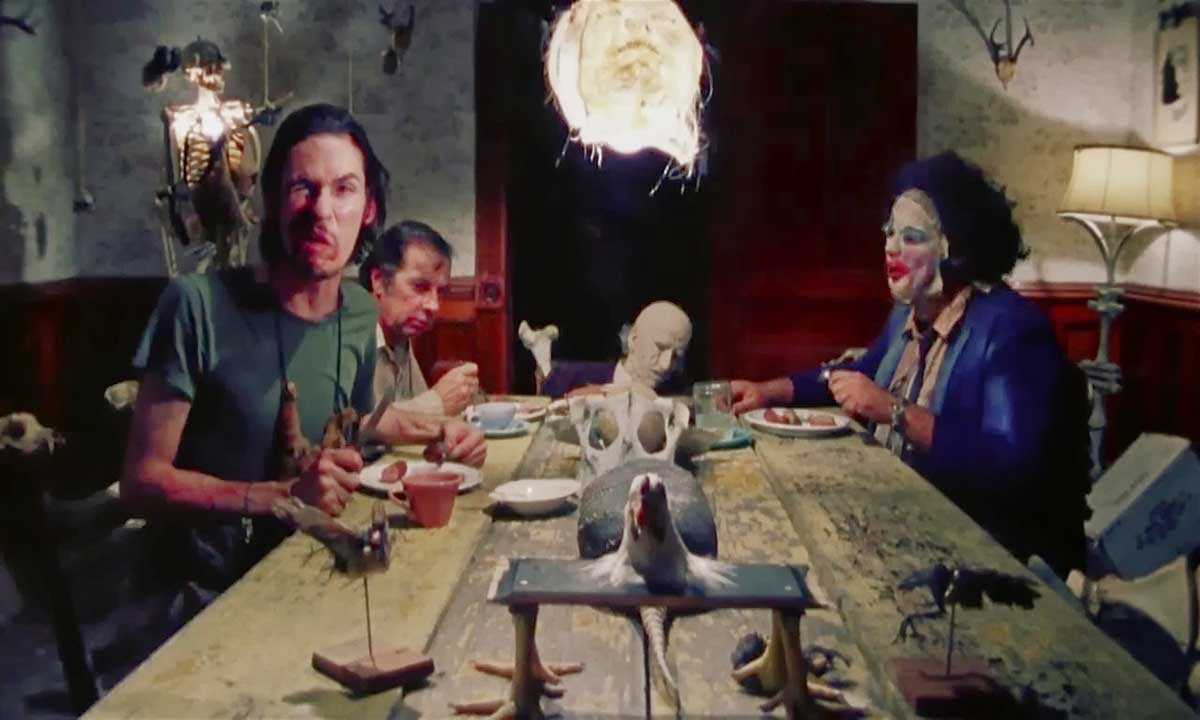The Power of Sound in The Texas Chainsaw Massacre
The first time I ever heard about The Texas Chainsaw Massacre, my mother was talking about how it was the most brutal, gory movie she had ever seen. By the time I got around to actually seeing the film, it was much to my surprise, although brutal as it was, it had little to no blood. Even the majority of the violence is implied. So what was it that had my Mom so convinced that she had seen a bloodbath? The biggest contributing factor was the power of sound design. As a horror fan, I have come to appreciate the importance and potential of sound design in a very unique way. The genre as a whole depends on it since sound is so pivotal to create as primal of an emotion as fear. Especially in the early days of special effects when so much was left up to the imagination. This was made even more apparent with the resurgence of remakes. In the early 2000’s, theaters were being bombarded with remake after remake of classic horror films. Yet, when the remake of The Texas Chainsaw Massacre popped up, much like most of them, it just didn’t hold a candle to the original. So what was it about the sound of these original films that was so much more effective than the gore-fests that were the Michael Bay produced remakes?
For starters, it was all about what you don’t see. The imagination is an effective tool and filmmakers occasionally forget this. Many people see film as a predominantly visual medium and believe they have to show everything in order for it to be effective. However, a truly effective film incorporates all elements that contribute to the overall vision and sound is a subtle yet incredibly important factor. I am proud to say that sound design does seem to be held to a slightly higher priority within the horror community. Just as lighting is used to hide things more often than show them, sound design and score help subconsciously evoke emotions and enforce the atmosphere and tone of a film. Like almost all great things regarding suspense in film, a large amount of these techniques can be traced back to the late great Alfred Hitchcock. Much in the way my mother remembered The Texas Chainsaw Massacre, many people recall the shower scene in Psycho to be much more graphic than it actually was. Hitchock combined effective lighting and visuals with a, now famous, piercing violin track. The sound makes you anxious and uncomfortable and its repetitive drive keeps you on edge even without seeing it. This is the fundamental power of great sound design in horror films. Even if someone were to close their eyes during this scene, they would still be having very much the same reaction to it as those who are viewing it. Hitchcock knew he was limited with what he could show and used all his tools as a filmmaker ingeniously.
Tobe Hooper must have drawn a great amount of inspiration from Alfred Hitchcock’s work. Although the sound design for Texas Chainsaw definitely stands on it’s own, it still included many of Hitchcock’s methods when it comes down to the fundamental design for the film. Hooper used grating, stress inducing sounds to bombard the audience with a constant barrage of noise to fill in the blanks in what they couldn’t actually show. Apart from being made in 1974, the film was very much low budget and Hooper was originally shooting for a PG rating, though that was ultimately a pipe dream. This is why so much of the sound is designed to embellish what is going on off screen. The thing that sets the sound of this film apart from Psycho however, is the type of sounds and score used. Whereas in Hitchcocks’ films and all of the other films of the era, orchestral scores and sound effects were predominantly used, Texas Chainsaw experimented with mechanical, raw, and practical sounds in an almost avant-garde fashion. They took sounds that were appropriate to the tone and setting of the film and found ways of making them sound violent and disturbing. It layered the off screen sounds to drive home the atmosphere and location of the film. For example, when the group arrives at the farmhouse and the action begins to ramp up, farm animals can be heard in realistic yet disturbing ways. It used everyday sounds of the Texas countryside to establish the world and turn it against itself.
In the scene where Pam discovers the room filled with furniture and strange totems made out of human bones, there are chicken feathers all over the room and the sound of a distressed chicken loudly crowing off screen. At first it comes off as a piece of score outside of the awareness of the character (non-diegetic sound) since the bird isn’t actually seen. It’s panic dominates the scene and mirrors the character’s own reaction to her horrific discovery. With each cut to bone totems and skeletal sculptures, the metallic tones and a cicada-esque hissing, the scene is given a ritualistic voodoo atmosphere that keeps getting louder and louder. She is trapped in a real life nightmare reminiscent of some kind of pure, ancient evil. It is also revealed amongst quick cuts that a chicken is in fact present in the scene. This is one of many times in the film where diegetic and non-diegetic sounds are almost interchangeable. It is also a very intelligent set up for the next scene that becomes the intense turning point for the rest of the film.
From this point on, The Texas Chainsaw Massacre becomes a sheer assault on the senses. Just as before, the scene begins with an off screen diegetic sound as the characters follow and discover a loud running generator, the mechanical sound runs unpleasantly throughout the scene as the two characters continue to explore the nearby house. When one of the characters enters the house, a loud distressed pig squealing can be heard as he enters. As the generator continues to run, with the memory of the chicken in the previous scene fresh in the audience’s memory, it comes as a great surprise when the sound is revealed to be non-diagetic and Leatherface appears instead. The squeals mixed with the running of the generator, make the scene a stress inducing panic attack that compliments the brutal simplicity of the stagnant camera and deliberate blocking of the actors. When the pigs begin to squeal, you know you are in for another terrible discovery. As Leatherface violently throws the large metal door open and cracks the character on the head with hammer without so much as a beat of hesitation, the unrelenting sound does not even allow your brain to fully process what is going on. The loud wet crack of the hammer as it comes down on his head and pig squeals syncing up with his seizing body instantly conjure up the brutality of slaughterhouses and conveys Leatherface’s perception of the man.
Despite the abruptness and overwhelming violence of the first death, the audience isn’t given a chance to catch their breath before the next, even more excruciating, death. The fate of the next character is arguably the most famous scene in the film and the one my mother describes in much more graphic detail than what is actually shown on screen. After exploring on her own, the woman enters the house where the man had been killed only minutes before. Leatherface quickly appears following the overwhelmingly loud slam of his metal door. She quickly succumbs to his pursuit and gets promptly hung on a meat hook. Whereas many horror scores `tend to use a rise and fall in music to guide the action in the film, The Texas Chainsaw Massacre uses sound to overwhelm instead of guide. It’s really the film’s electronic and eclectic score and it’s absence of an orchestra that set it apart. They do enforce a few of the same techniques and traditions as a symphony in the film however. For example, the mechanical buildup and animal sounds usually become more intense before a moment of violence. The difference in sound type just happens to make all the difference. It’s as if they took the sonic textures that cause distress and layered them in replacement of the score. This technique, along with the cinematography and production design, yielded a far more realistic film than had previously appeared in the Horror genre before.
It’s rumored that The Texas Chainsaw Massacre was initially supposed to be much more of a satire than it ended up being. If this is in fact true, then the filmmakers definitely shot that horse in the face when they designed the sound. The design seals in so many different elements of the final product. Even the title is reinforced with the sound of a chainsaw consistently running throughout. There is only one person in the film who even dies from the chainsaw, yet it is used in the same way as the generator to create a constant, overwhelming track they could use to assault the audience with. The last ten or so minutes of the film are dominated by the sound, along with actress Marilyn Burns’ terrified screams and ambient sounds of the Texas countryside. Even as she escapes in the bed of the pickup truck, her relief turns to maniacal laughter. The ending does not really let you feel the sense of relief of her escape because she is now mentally broken. Her laughter is cut in with the sound of Leatherface angrily waving his chainsaw in the air.
When the film was released in 1974, the country was in the final years of the Vietnam War. This was a dark time for the American youth and many were feeling especially pessimistic. The reality and tone of this film represented the bleak hopelessness sweeping through the country at the time. These fears seeped through every aspect of the sound design. It took the average sounds of farms in the American South, and showed its brutality. It represented a generation who felt as though everything about their everyday lives had become violence and lies. The unrelenting assault on the senses can be traced back to the merciless fear of the American government as they drafted the youth of the nation and picked them off one by one. Even the tribal sounds heard by Pam when she discovers the bones speak to the underlying Xenophobia being promoted by the government in this era. In the ending scene, when Sally escapes, her laughter could even be representative of the men returning home from war. Yes they escaped with their lives, but there is now irreparable mental damage so it can’t be entirely written off as a happy ending. The film struck entirely too many chords for the American public and it’s unusual sense of reality made people face certain things they may not have wanted to face. The Texas Chainsaw Massacre captured a powerful mindset and the anger and fear of an entire generation and that is why, 40 years later, a film made for $80,000 went on to gross nearly $40 million and continues to be one of the most terrifying films ever made.
@TalesfrmthCrypt





